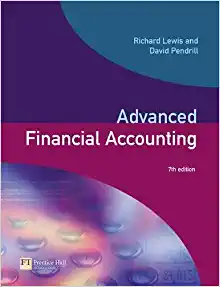Question
Question HD's business HD was a large producer of branded appliances primarily used in residential households. For the period 2015-2019 the industry posted modest annual
Question
HD's business
HD was a large producer of branded appliances primarily used in residential households. For the period 2015-2019 the industry posted modest annual unit sales growth of 1.8% despite positive market conditions including a strong housing market and product innovations. Competition from inexpensive imports and aggressive pricing by Mass Merchandisers Limited has reduced growth to 2.5% annually over the period. Under its CEO Benjamin White's leadership, HD operated much as it always had, with three notable exceptions. First, the company completed an IPO (Initial Public Offering) in 2014. This provided a measure of liquidity for founders' descendants who, collectively, owned 62% of the outstanding shares following the IPO. Second, beginning in the 2010s, HD has gradually moved its production abroad. Finally, HD had undertaken a strategy focused on rounding out and complementing its product offerings by acquiring small independent manufacturers and/or the kitchen appliance product lines of large diversified manufacturers. Thus far, all acquisitions had been for cash or HD stock.
HD's historical performance
During the year ended December 31, 2019, HD earned net income of $8.25 billion on revenue of $83.18 billion. Exhibits 1 and 2 present the company's recent financial statements. The company's 2019 EBIT margin of nearly 7.0% was average within the peer group. During 2015- 2019, compounded annual returns for HD shareholders (including dividends and stock price appreciation) was approximately 11.1% per year. This was higher than the ASX S&P200, which returned approximately 5% per year. However, it was well below the 16% annual compounded return earned by shareholders of HD's peer group during the same period.
HD's financial policies
HD's financial position was conservative and very much in keeping with HD's longstanding practice and, with its management style. In recent years the company's largest uses of cash Page 2 of 7 Sem 2 2020 Joey Yang have been common dividends and cash consideration paid in various acquisitions. Dividends per share had risen only modestly during 2015-2019. However, as the company issued new shares in connection with some of its acquisitions, the number of shares outstanding increasesd to approximately 1.27 billion by the end of 2019.
31/12/2019
Net income (000s) 8,248,500
Average number of shares outstanding (000s) 1,267,881
Effective corporate tax rate 36.50% (use this rate in your calculations)
Average cost of bonds 2.1%
On a bright Friday afternoon, Benjamin sat in his office reflecting on a meeting he had with an investment banker earlier in the week. The banker, whom Benjamin had known for years, asked for the meeting after a group of private equity investors made discreet inquiries about a possible acquisition of HD. Although HD was a public company, a majority of its shares were controlled by family members descended from the firm's founders together with various family trusts. Benjamin knew the family had no current interest in selling - on the contrary, HD was interested in acquiring other companies in the same industry - so this overture, like a few others before it, would be politely rebuffed.
Nevertheless, Benjamin was struck by the banker's assertion that a private equity buyer could "unlock" value inherent in HD's strong operations and balance sheet. Using cash on HD's balance sheet and new borrowings, a private equity firm could purchase all of HD's outstanding shares at a price higher than its current stock price of $114.33 per share. It would then repay the debt over time using the company's future earnings. The banker pointed out that HD itself could do the same thing - borrow money to buy back its own shares. In the days since the meeting, Benjamin's thoughts kept returning to a share repurchase. Working as the analyst for the company, explain the pros and cons of this deal. Here is a draft of your report. Draft report - an analysis on capital structure and firm value
Capital structure in perfect markets vs. with taxes (11 Mark)
In preparing the report, you decide to start from the scenario where the capital markets are perfect. Using Excel spreadsheets, you complete the following:
1. Compute the market debt to equity (D/E) ratio, the cost of equity (rE) and the weighted average cost of capital (WACC) for HD. It is assumed the cost of unlevered equity (rU) is 14.8%. (Hint: the market value of debt is the sum of Long Term Debt and Short Term Debt/Current Portion of Long Term Debt subtracting Cash and Cash Equivalents from the balance sheet. Use market value of equity.)
2. Repeat the above assuming that market frictions exist, such as corporate tax.
3. Compare results in the above two questions, and use MM theory to explain the effect of capital structure on the equity cost of capital and WACC a) in perfect markets; and b) when corporate tax exists. (No calculation is needed.)
Step by Step Solution
There are 3 Steps involved in it
Step: 1

Get Instant Access to Expert-Tailored Solutions
See step-by-step solutions with expert insights and AI powered tools for academic success
Step: 2

Step: 3

Ace Your Homework with AI
Get the answers you need in no time with our AI-driven, step-by-step assistance
Get Started


